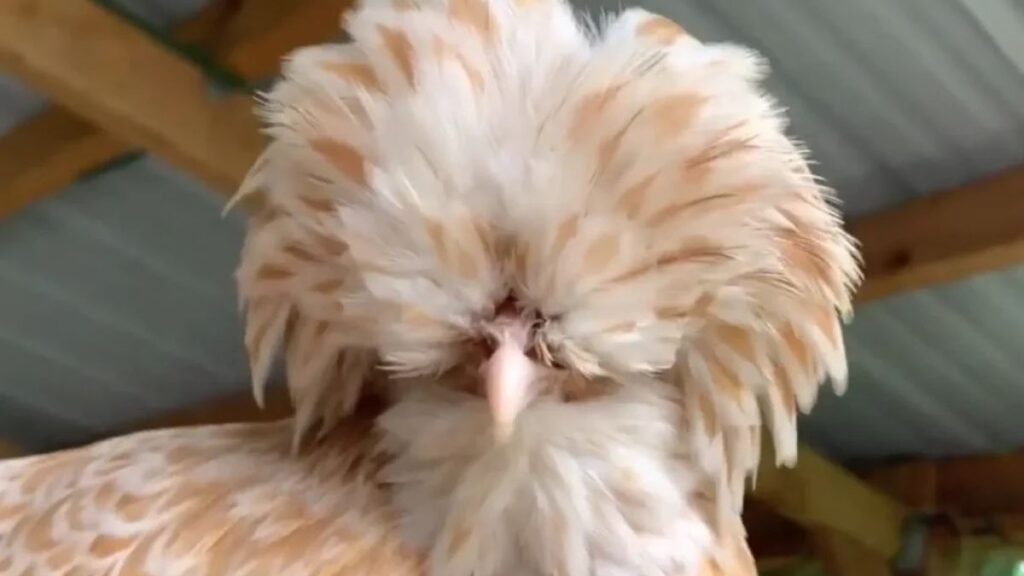Introduction
Polish chickens, with their distinctive crests of feathers and quirky personalities, are among the most recognizable and ornamental chicken breeds in the world. Often referred to as “Polands” or “Top Hats,” these birds are prized for their unique appearance, friendly demeanor, and good egg-laying capabilities. Whether you’re a poultry enthusiast, a backyard chicken keeper, or simply curious about this fascinating breed, this article will explore everything you need to know about Polish chickens—from their history and characteristics to their care and breeding.
History and Origin of Polish Chickens
Despite their name, Polish chickens do not actually originate from Poland. The exact origins of the breed remain unclear, but historians believe they may have been developed in the Netherlands or Spain. The name “Polish” likely comes from the Middle Dutch word pol, meaning “head,” referring to their prominent feather crests.
Polish chickens were first documented in the 16th century and became popular in Europe among nobility and aristocracy due to their striking appearance. They were later introduced to America in the 1800s, where they were primarily kept as ornamental birds and exhibition poultry. Today, they remain a favorite among poultry fanciers and backyard flock owners.
Physical Characteristics of Polish Chickens
Polish chickens are easily identifiable due to their unique features:
1. Crested Feathers
The most distinguishing trait of Polish chickens is their large, fluffy crest of feathers on top of their heads. This crest can sometimes obstruct their vision, making them more skittish or easily startled. Some breeders trim the feathers around their eyes to help them see better.
2. Varieties and Colors
Polish chickens come in several color varieties, including:
- White Crested Black – Black body with a white crest
- Golden – Golden feathers with a contrasting crest
- Silver – Silver-laced feathers
- Buff Laced – Buff-colored with lacing
- Blue – Slate-blue feathers
- White – Entirely white plumage
They also come in both bearded and non-bearded varieties, with the bearded type having additional feathers around the face.
3. Size and Weight
Polish chickens are a medium-sized breed:
- Roosters: 6 lbs (2.7 kg)
- Hens: 4.5 lbs (2 kg)
- Bantams: Smaller versions, weighing around 2 lbs (0.9 kg)
4. Comb and Wattles
They have a small V-shaped comb and red wattles, though these are often hidden beneath their crest feathers.
Temperament and Behavior
Polish chickens are known for their docile and friendly nature, making them excellent pets. However, their crests can sometimes make them more vulnerable to bullying from more aggressive breeds. They are also more prone to being startled due to limited visibility.
Pros of Keeping Polish Chickens:
- Gentle and friendly – Great for families and children.
- Good layers – They produce a respectable number of eggs.
- Ornamental appeal – Their unique look makes them a standout in any flock.
Cons of Keeping Polish Chickens:
- Prone to predators – Their crests can block their vision, making them more vulnerable.
- Require protection – They may need extra care in mixed flocks to avoid bullying.
- Not the best foragers – Due to their limited vision, they may struggle in free-ranging environments.
Egg Production and Utility
While Polish chickens are primarily kept for ornamental purposes, they are also decent egg layers:
- Egg Color: White
- Egg Size: Medium
- Annual Egg Production: 150–200 eggs per year
- Broodiness: Low (they rarely go broody)
Though not as prolific as commercial egg-laying breeds like Leghorns, Polish hens provide a steady supply of eggs while adding aesthetic value to a flock.
Housing and Care Requirements
1. Coop Setup
Polish chickens need a secure, predator-proof coop with good ventilation. Because their crest feathers can get dirty or wet, they should have clean, dry bedding (such as straw or wood shavings) to prevent infections.
2. Feeding and Nutrition
A balanced diet is essential:
- Layer feed (16-18% protein) for hens
- Grit and oyster shell for digestion and strong eggshells
- Fresh water at all times
3. Health Considerations
- Crest Maintenance: Keep feathers trimmed around the eyes if necessary.
- Parasite Control: Regularly check for mites and lice.
- Weather Protection: Their crests can get wet and freeze in winter, so ensure they stay dry.
Breeding Polish Chickens
Breeding Polish chickens can be a rewarding experience, but there are some challenges:
1. Genetic Considerations
- The crested gene can sometimes lead to skull deformities (known as “brain hernia”) in chicks.
- Breeding two heavily crested birds may increase the risk of health issues.
2. Incubation and Hatching
- Polish hens are not known for broodiness, so eggs may need artificial incubation.
- Chicks should be kept warm and monitored for any skull abnormalities.
3. Selecting Breeding Stock
Choose birds with:
- Well-shaped crests (not obstructing vision)
- Good body conformation
- Friendly temperament
Polish Chickens in Shows and Exhibitions
Due to their striking appearance, Polish chickens are popular in poultry shows. Judges look for:
- Symmetrical crests (full and round)
- Proper coloring (according to breed standards)
- Upright posture and alert demeanor
If you plan to exhibit Polish chickens, ensure they are well-groomed and free of defects.
Common Myths and Misconceptions
1. “Polish Chickens Are From Poland”
As mentioned earlier, their name is misleading—they likely originated in the Netherlands.
2. “They Are High-Maintenance”
While they require some extra care (like crest trimming), they are generally low-maintenance compared to other ornamental breeds.
3. “They Don’t Lay Many Eggs”
Though not the most prolific layers, they still produce a fair number of eggs per year.
Conclusion
Polish chickens are a delightful addition to any flock, combining beauty, personality, and utility. Whether you’re looking for a charming backyard pet, an exhibition bird, or a steady egg layer, the Polish breed offers something for everyone. With proper care and attention, these crested wonders can thrive and bring joy to poultry enthusiasts for years to come.
If you’re considering adding Polish chickens to your flock, be prepared for their unique needs—but rest assured, their quirky charm and friendly nature make them well worth the effort!






